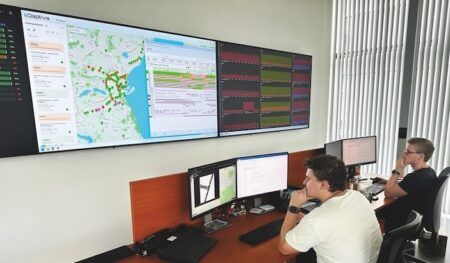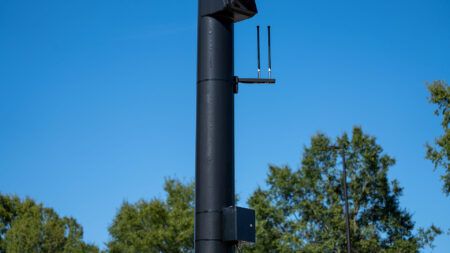In collaboration with leading sight loss charity RNIB (the Royal National Institute of Blind People), the UK’s Transport Systems Catapult (TSC) is using smartphone technology to help design transport systems suitable for people with visual loss impairments and conditions.
The TSC’s new smartphone app allows users to experience the world around them from the viewpoint of people experiencing various eye conditions. The ‘Eyeware’ app was developed with the RBIB and applies virtual filters over the surrounding environment that mimic various conditions in real time. Users can experience conditions such as diabetic retinopathy, retinitis pigmentosa, cataracts and age-related macular degeneration (AMD). The filters are being used at the TSC to help design accessible transport systems within the organization’s ‘Visualization Laboratory’. This unique facility is designed to help industry develop potential applications of the latest virtual reality (VR) and augmented reality (AR) technology for the transport industry. The Eyeware app is now being made available to the public as an educational tool.
RNIB statistics show that more than two million people in the UK are affected by sight loss, with that figure predicted to double to nearly four million by 2050. Findings from the RNIB’s 2015 ‘My Voice’ survey revealed that 40% of blind and partially sighted people were not able to make all the journeys that they wanted or needed to because of lack of accessibility. The Eyeware app is available for download from the Apple and Android webstores.
“Urban environments like stations and new technology can be confusing for anyone, but the difficulties this causes can be increased 10-fold when someone is blind or partially sighted. Our app allows users to put themselves in the shoes of people with sight loss conditions, so they can make better decisions about accessibility,” explained Eyeware project leader Martin Pett, principle technologist at the TSC.
“Not only are we aiming to raise awareness of these disabilities, but our app will also have practical applications. For instance, we are helping architects design stations that are easily navigable for people with sight loss and looking at ways to make self-driving cars more accessible.”
John Worsfold, RNIB implementation manager, commented, “There is huge potential for this app to raise awareness of what it might be like to have an eye condition, both from an educational and practical standpoint. Eyeware can help friends and family better understand their loved ones’ condition, young people empathizing with those suffering visual impairment, to helping policy makers, architects and designers make better decisions in designing more inclusive goods and services, such as urban environments and transportation.”




